Horsehair Worms
A bunch of times over the years I’ve seen long worms in puddles and temporary pools. The worms will be white or brown, and ranging in size from six inches or so up to around ten inches.
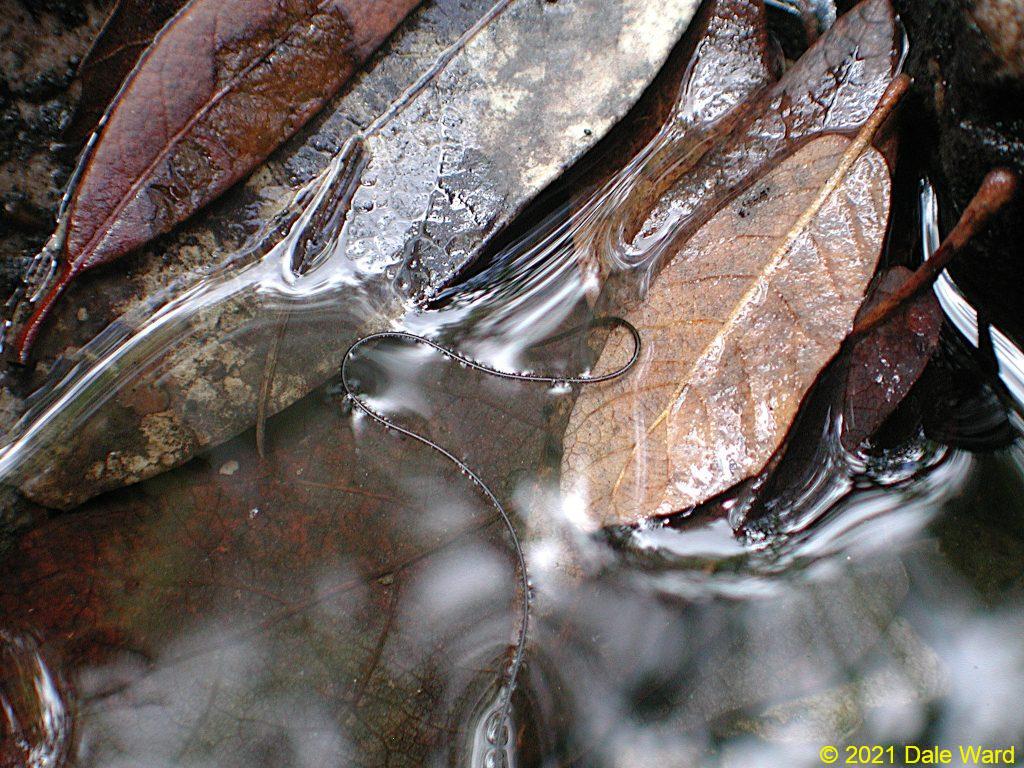 Horsehair worm in ephemeral pool with oak overstory. Gardner Canyon, Santa Rita Mtns (2002-09-01)
Horsehair worm in ephemeral pool with oak overstory. Gardner Canyon, Santa Rita Mtns (2002-09-01)
The worms moved slowly if they moved at all, so that I would sometimes wonder if they really were worms or just pieces of detritus. They also had a tough, wirey texture to them, not like a ‘normal’ worm at all.
These are parasites on insects, especially Orthopterans such as crickets, grasshoppers and cockroaches. They are called Horsehair Worms, and are members of the Nematomorpha.
And they can ‘take over’ the behavior of their insect host.
The adults don’t feed. They are missing most organ systems (excretory, respiratory, circulatory) and have a non-functional digestive systems. They’ve only got longitudinal muscles, so they don’t have a great deal of control over their motion.
The worms are either male or female. They mate and their larvae hatch in puddles of water. Somehow the larvae get into host animals. I don’t think anybody really knows how that happens, whether the larvae bore into the host, the host ingests the larvae, or what.
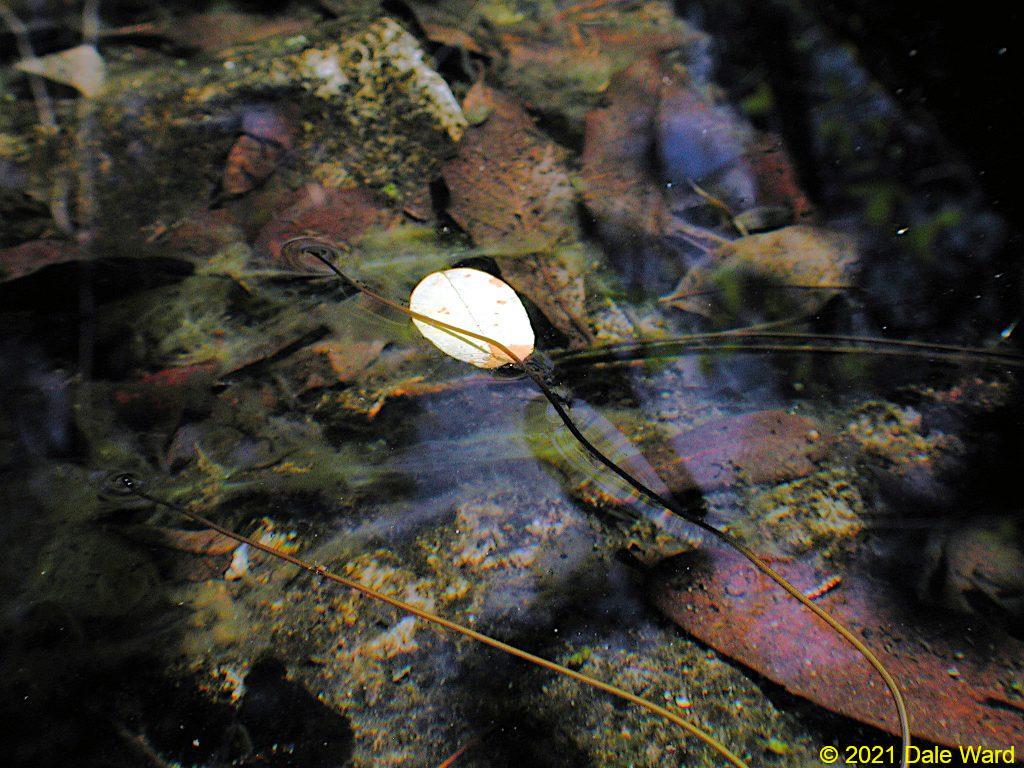 Horsehair worms in ephemeral pool with oak overstory. Gardner Canyon, Santa Rita Mtns (2002-09-01)
Horsehair worms in ephemeral pool with oak overstory. Gardner Canyon, Santa Rita Mtns (2002-09-01)
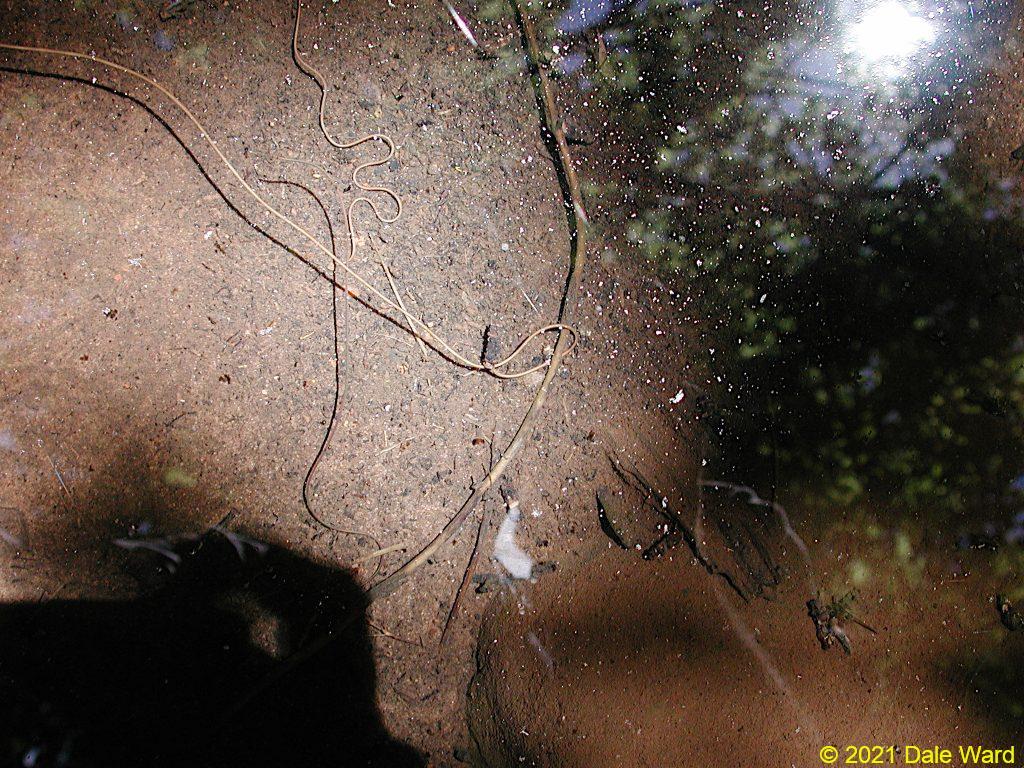 Horsehair Worms in ephemeral woodland pool (July 21, 2001) See Canyon (Mogollon Rim), Arizona.
Horsehair Worms in ephemeral woodland pool (July 21, 2001) See Canyon (Mogollon Rim), Arizona.
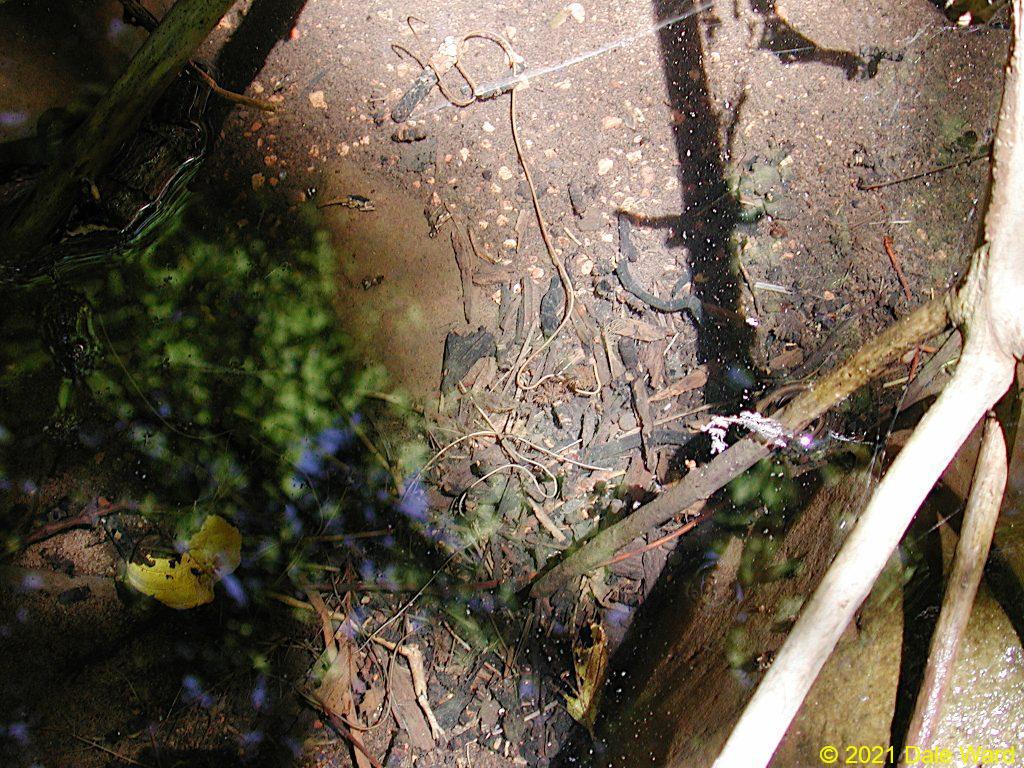 Horsehair worms in ephemeral woodland pool - July 21, 2001 See Canyon (Mogollon Rim), Arizona.
Horsehair worms in ephemeral woodland pool - July 21, 2001 See Canyon (Mogollon Rim), Arizona.
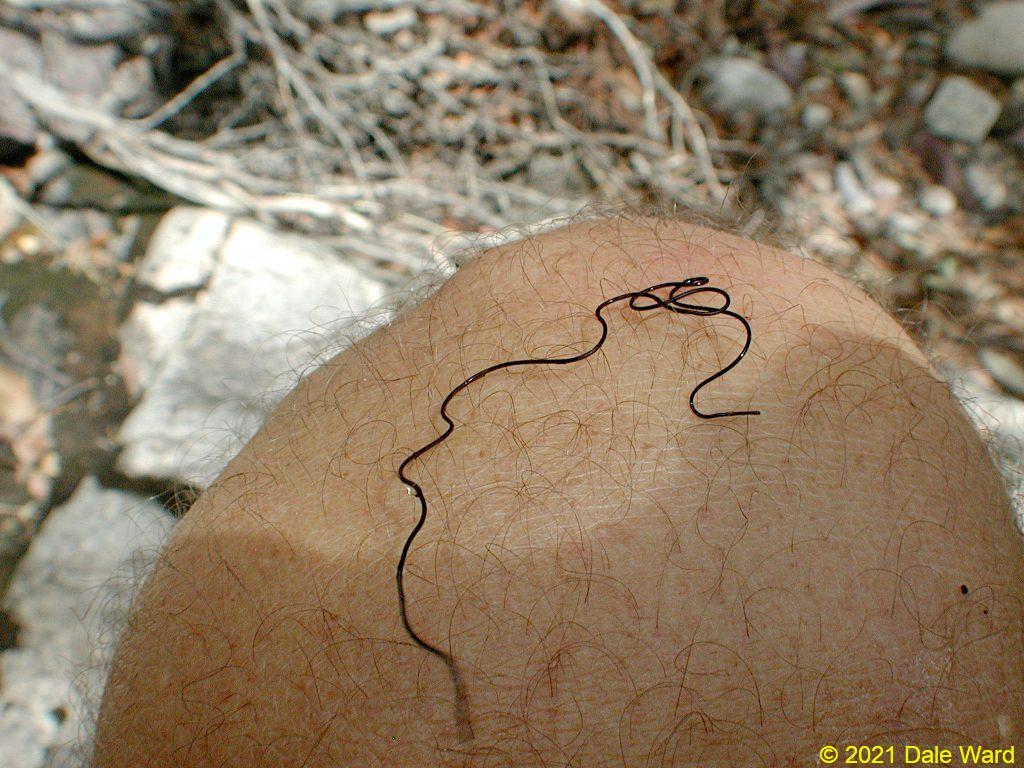 Horsehair Worm on my knee (for scale). Gardner Canyon, Santa Rita Mtns (2002-09-01)
Horsehair Worm on my knee (for scale). Gardner Canyon, Santa Rita Mtns (2002-09-01)
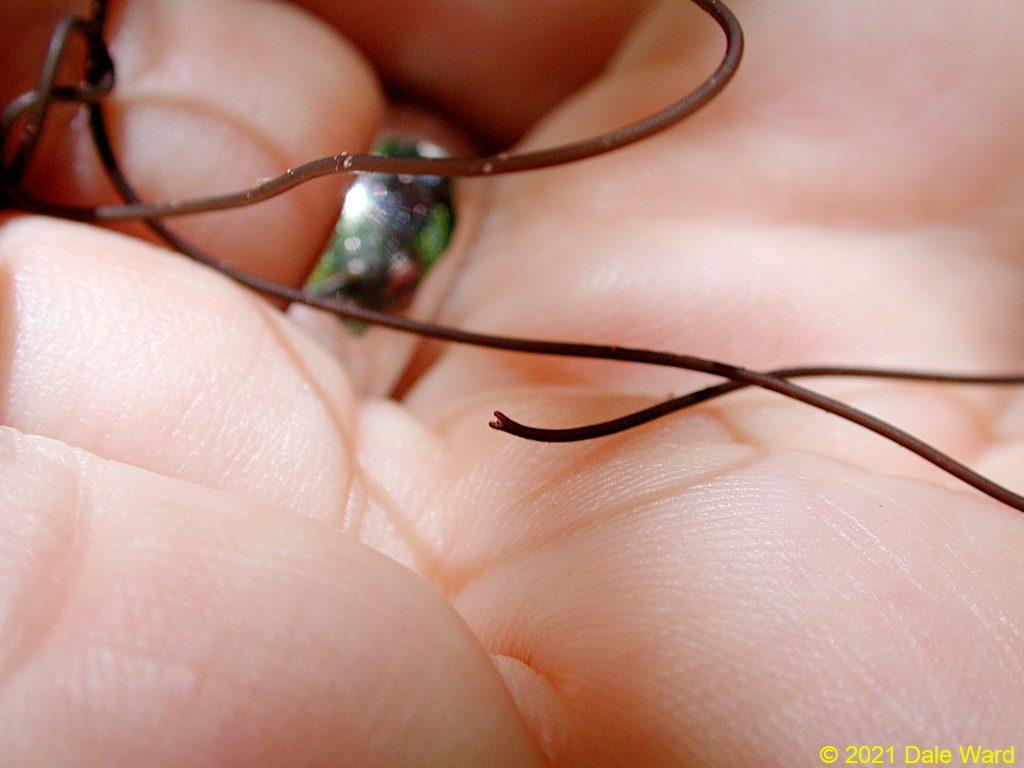 Horsehair worm in palm of my hand - July 21, 2001. See Canyon (Mogollon Rim), Arizona.
Horsehair worm in palm of my hand - July 21, 2001. See Canyon (Mogollon Rim), Arizona.
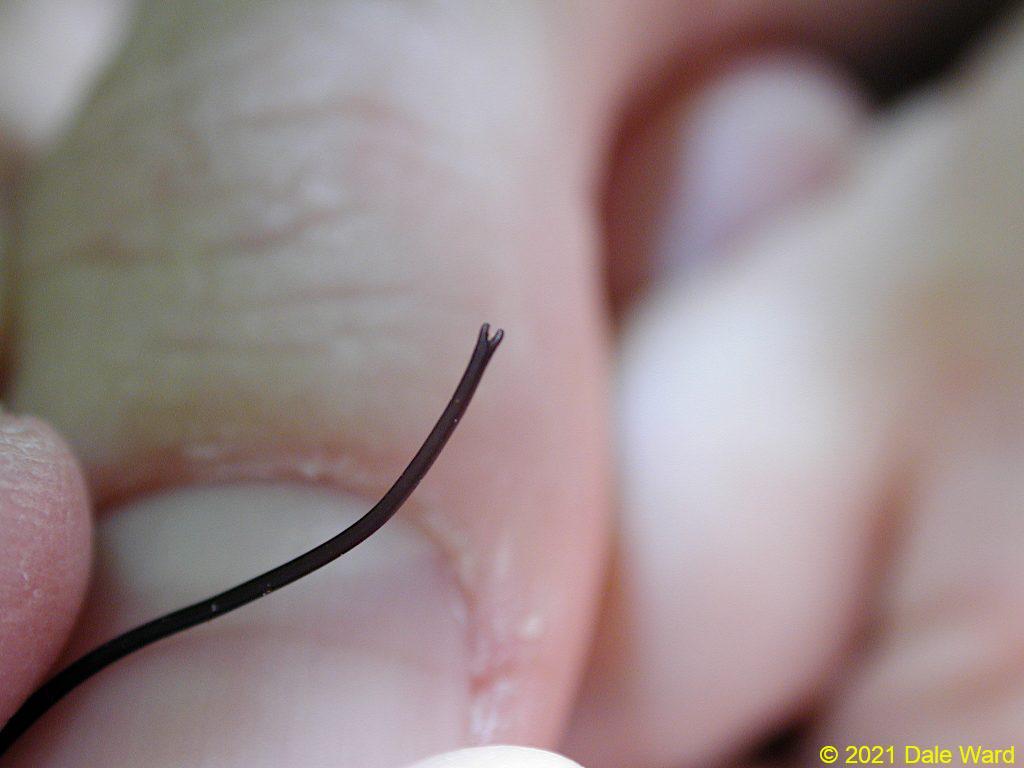 Close up of Horsehair worm in palm of my hand - July 21, 2001. See Canyon (Mogollon Rim), Arizona.
Close up of Horsehair worm in palm of my hand - July 21, 2001. See Canyon (Mogollon Rim), Arizona.
Their host is usually an insect, especially an Orthopteran (cricket, grasshopper, cockroach, mantis). Once inside the host the larva grows.
When it’s mature the larva somehow convinces the host insect to immerse itself in water. Some accounts say that the insect “drowns itself”, but that is evidently not always true.
The worm somehow knows that it’s in water, and it bursts forth from its host. Sometimes it’s a literal bursting, a mini-worm explosion, and sometimes it just crawls out of the insect’s abdomen. Sometimes the insect even survives(!).
Supposedly, the worm causes the “immersion behavior” not by giving the host a burning sensation, as the Guinea Worm (Dracunculus) does to humans. Rather, it seems to secrete some sort of chemical that makes reflective surfaces very appealing to the host insect.
There are instances of cats, dogs and humans getting infected with these worms, as well. As far as researchers can tell, these infections were caused by the critter ingesting an infected insect. In the cases I read about (see the references section of the wikipedia article), the dog/cat/human either vomited the worm up or passed it in its stool.
Another really interesting thing about these worms: in a study looking at the biology of an endangered species of Japanese trout (Salvelinus leucomaenis japonicus), approximately 60% of the trout’s annual energy intake was supplied by Nematomorph-infected Camel Crickets and Grasshoppers.
That’s an astonishingly high percentage. Without the parasite infecting the insects, thus forcing them into the water, the energy flow into the stream would be vastly different. Would the trout be able to just switch over to eating other insects? Or would there be fewer trout? Or even no trout?
Also makes me wonder what other ecosystems rely upon parasitism, and especially parasite control of their hosts’ behavior, for their functioning.
‘Tis a strange and beautiful world.
Sources:
Wikipedia.org entry on Nematomorphs
Dawkins, Richard, David P. Hughes, Jacques Brodeur, Frederic Thomas. 2012. Host Manipulation by Parasites. SBN-13: 978-0199642236. Oxford University Press.
Sato, Takuya,Katsutoshi Watanabe, Minoru Kanaiwa, Yasuaki Niizuma,Yasushi Harada, and Kevin D. Lafferty. 2011. Nematomorph parasites drive energy flow through a riparian ecosystem. Ecology 92(1).